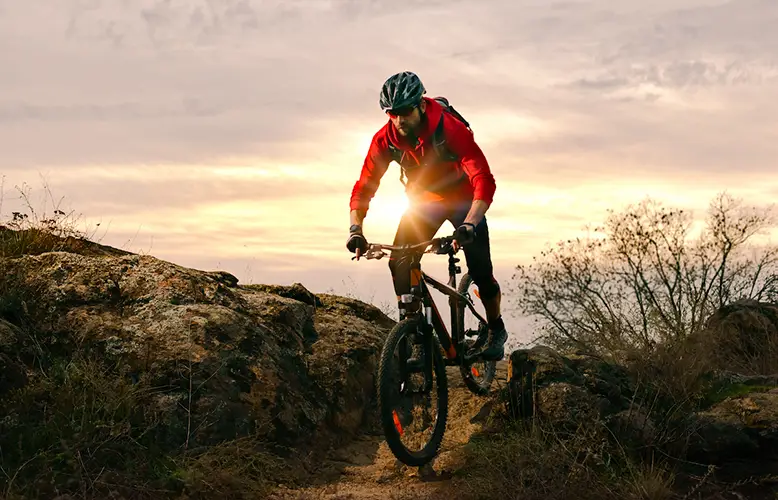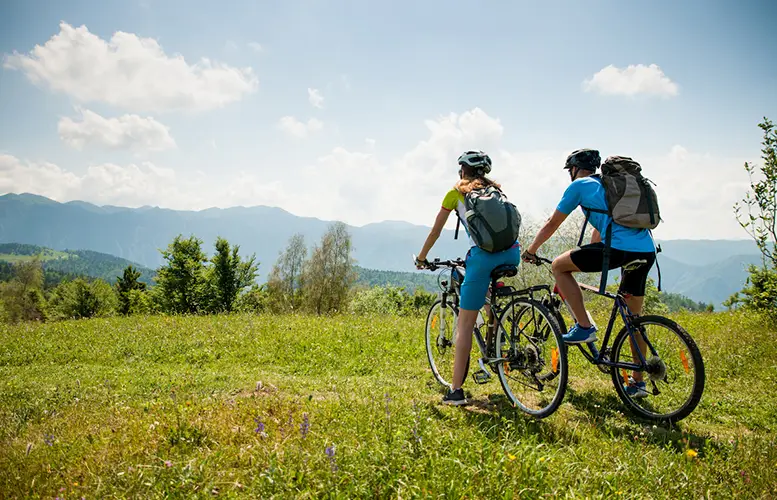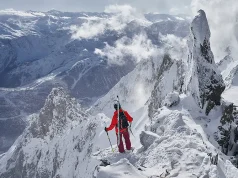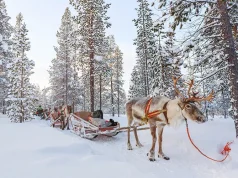Norway is a country that rewards attention. Its landscapes don’t beg for your gaze—they quietly command it. While many travelers drive its switchback roads or cruise its coastal fjords, there’s a more grounded way to take it in: by bike.

Cycling through Norway isn’t fast. It’s not always easy. But it’s deeply absorbing. It invites you into the terrain rather than showing it to you from a distance. You feel the contours of the land in your legs. You register changes in weather not through forecasts, but through the air on your face. You start to notice the things that can only be seen when moving steadily and deliberately—one pedal stroke at a time.
The Terrain Tells the Story
Norway’s landscape is famously dramatic. Steep fjords, wide valleys, mountain passes, and rocky coastlines all compress into relatively short distances. By car, it can feel like a blur of beauty. On a bike, it stretches out. The terrain asks something of you, but it also gives back constantly.
Some days bring long, smooth descents through alpine scenery. Others test your legs with gradual, winding climbs that reward you with open views and the kind of quiet that only comes when there’s no engine running. The roads—often narrow but well-kept—wind through forested interiors, lakeside farms, and cliffside shelves where the sea far below looks like glass.
It’s a landscape that lends itself well to touring, particularly when the route is thoughtfully planned. Many Norway bike tours are designed to balance the challenge with the reward: gentle sections between towns, ferry crossings that break up the rhythm, and overnight stays that let you rest in small inns, fjordside cabins, or mountain lodges.
Movement, Not Mileage
Cycling in Norway isn’t about the distance—it’s about the day. You might ride 50 kilometers and feel like you’ve seen an entire country’s worth of terrain. The scenery shifts quickly: a coastal stretch gives way to farmland, which folds into forest, then opens again into mountain country. You might stop for a sbike wim in a glacial lake, a coffee in a roadside café, or a long look at a valley you hadn’t expected to see.
That rhythm—of effort and rest, movement and pause—is part of what makes bike touring feel different from other forms of travel. You aren’t crossing Norway. You’re inhabiting it.
For self-guided riders, it’s easy to build that rhythm into the day. With luggage transferred ahead and accommodations pre-arranged, you’re free to focus on the route itself. Many of the most popular cycling routes in Norway are designed around this idea: travel light, move purposefully, and let the landscape set the pace. For travelers who want that kind of experience without having to manage every detail, a number of well-organized Norway bike tours offer the same freedom—just with the logistics already in place.
Not Just Nature, But Quiet Culture
Norway’s reputation for wilderness is well deserved. But when you travel by bike, you also see the subtle ways people live within that wildness. You pass farms still run by families, coastal villages where fishing boats rock quietly in the harbor, and upland cabins used only in summer, their paths lined with blueberry bushes and worn stone steps.
The human scale of Norway is something you miss when traveling quickly. Cycling brings it into focus. There’s no rush through towns. No skipping over what lies between destinations. You meet people not through transactions, but through timing—arriving at the same place by different means.
When to Go, and What to Expect
The best season for bike touring in Norway is from late May to early September. Earlier in the year, snow may still linger in higher elevations. July and August offer the warmest weather and the longest daylight—especially in the north, where you might never need lights on your bike at all.

That said, the weather can change quickly, even in summer. Riders should be prepared for wind, sudden rain, and the occasional cold snap. But with proper layering and good route support, these shifts become part of the texture of the trip—not a disruption, but a reminder of where you are.
Roads are generally well maintained, and traffic outside the major corridors is minimal. Signage is good, especially on national and regional cycle routes. And if you choose to join a supported tour, route planning, accommodations, and local knowledge are often handled in advance—leaving you to focus on the ride.
To explore Norway by bike is to accept that time will move differently. It won’t be measured in cities checked off or attractions visited, but in stretches of silence, unexpected views, and the quiet satisfaction of arrival. The road will be long some days and forgiving others, but the rhythm is yours.
This kind of travel doesn’t try to control the journey. It just asks that you show up, keep going, and look around. The reward isn’t just in the landscape—it’s in the act of crossing it slowly enough to remember.





